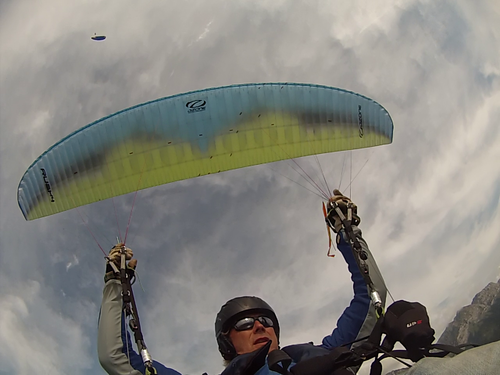Ozone Rush 4 MLThis glider has no LTF certification |
|||||||||||||||||||||||||||||||||||||||||||||||||||||||||||||||||||||||||||||||||||||||||||||||||||||||||||||||||||||||||||||||||||||


|
|||||||||||||||||||||||||||||||||||||||||||||||||||||||||||||||||||||||||||||||||||||||||||||||||||||||||||||||||||||||||||||||||||||
Instability rating |
|||||||||||||||||||||||||||||||||||||||||||||||||||||||||||||||||||||||||||||||||||||||||||||||||||||||||||||||||||||||||||||||||||||
|
|||||||||||||||||||||||||||||||||||||||||||||||||||||||||||||||||||||||||||||||||||||||||||||||||||||||||||||||||||||||||||||||||||||
Glider characteristics |
|||||||||||||||||||||||||||||||||||||||||||||||||||||||||||||||||||||||||||||||||||||||||||||||||||||||||||||||||||||||||||||||||||||
|
Launch preparations: average
launch characteristics: delayed, delayed climb, needs gentle guidance, good feedback during inflation, little braking required, slows before zenith, control check simple, low takeoff speed
asymmetric collapse: moderate dynamics, total course change 270-360°, (4), moderate course change rate, marked forward pitching 60-75°, (4), very high height loss 50-59 m, (4), low sink velocity 10-14 m/s, (1), collapse on opposite wingtip with course change >90°, (5), with tendency to cravat, (4), G-Force 3,5- 3,9 G, (4)
Frontal collapse: marked pitch backwards 45-60°, high pitch forwards >60°, high dynamics, no course change, (1), recovery usually immediate, usually symmetric recovery, immediate return to normal airspeed, with tendency to cravat, (4), high height loss 40-49 m, (3), low sink velocity 10-14 m/s, (1)
Spiral dives: rapid sink velocity increase, Moderate G-Force 3,5- 4.0 G, (2), Sink velocity after 720° <18 m/s, (3), High maximum sink velocity < 22 m/s, (3), sink velocity increase < 3 m/s on brake release, (1), Course change 360-540° after spiral exit, (3), moderate height loss during recovery 30-60 m, (2)
B-Stall: normal force required, moderate pitch backwards 15-30°, marked pitch forwards 30-45°, stable sink phase, no tendency to deform, immediate return to normal airspeed, 6-8 m/s, height loss on recovery 20-40 m
big ears: simple initiation, stable flight phase, delayed automatic recovery, Vsink unaccelerated 2,5-3 m/s, Vsink accelerated 3,5-4 m/s, Vunaccelerated 0-3 km/h less than trimspeed, Vaccelerated 0-3 km/h faster than trimspeed
Steering behaviour: agile, 80 cm brake travel range, very noticable brake pressure increasse, Late stall point, easily identifiable |
|||||||||||||||||||||||||||||||||||||||||||||||||||||||||||||||||||||||||||||||||||||||||||||||||||||||||||||||||||||||||||||||||||||
Notes |
|||||||||||||||||||||||||||||||||||||||||||||||||||||||||||||||||||||||||||||||||||||||||||||||||||||||||||||||||||||||||||||||||||||
|
Asymmetric Collapse: Ozone's Rush4 reacts surprisingly well to trim-speed collapses at the lower limit of the test field. Rotation is usually less than 90°, forward pitching less than 45°. If deformations are induced at the upper end of the test field, then reactions are more dynamic with impulsive re-inflation, collapses on the opposite wing tip, cravats and course changes. Forward pitching can then markedly exceed 60°. Collapse resistance is very high, and a lot of force is required to induce a collapse in the measurement field. Collapses are correspondingly steep, in particular when the glider is flown accelerated. Here the impulsive re-inflation may again create collapses on the opposite wing tip and cravats. All cravats could be easily recovered from via brake or stabiliser line input. Front Collapse: Ozone's Rush4 was remarkably well behaved in spite of its high aspect ratio. Collapses usually open progressively from the middle outwards. Occasionally an impulsive re-inflation of the entire canopy lead to marked forward pitching with following asymmetric collapses which also cravatted. Spiral Dive: Ozone's Rush4 (high end EN B) recovers excellently for its class, and shows only a tendency to remain for a little longer in the turn on exiting. B-Stall: Very stable sink phase, low pitching back and moderate pitching forward. Big Ears: High entry forcesrequired, no flapping, marked delayed recovery. |
|||||||||||||||||||||||||||||||||||||||||||||||||||||||||||||||||||||||||||||||||||||||||||||||||||||||||||||||||||||||||||||||||||||
Rating |
|||||||||||||||||||||||||||||||||||||||||||||||||||||||||||||||||||||||||||||||||||||||||||||||||||||||||||||||||||||||||||||||||||||
|
Safety class 5 This class of paraglider reacts very demandingly to one or more of the following manoeuvres: frontal collapse, asymmetric collapse or spiral dive and may present pilots with a particular challenge.Very demandingly means that the above manoeuvres result in highly dynamic reactions from the glider, and/or large height losses. Critical subsequent glider reactions are also to be expected. Expert piloting skills achieved through constant practice, fast personal reaction times and precise pilot inputs are required to be able to immediately react to the above manoeuvres to maintain flight control and prevent large height loss or subsequent critical glider reactions. In particular, pilots should be able to recognise the onset of the above manoeuvres and be able to prevent or minimise their effects through immediate and precise pilot inputs. |
|||||||||||||||||||||||||||||||||||||||||||||||||||||||||||||||||||||||||||||||||||||||||||||||||||||||||||||||||||||||||||||||||||||

